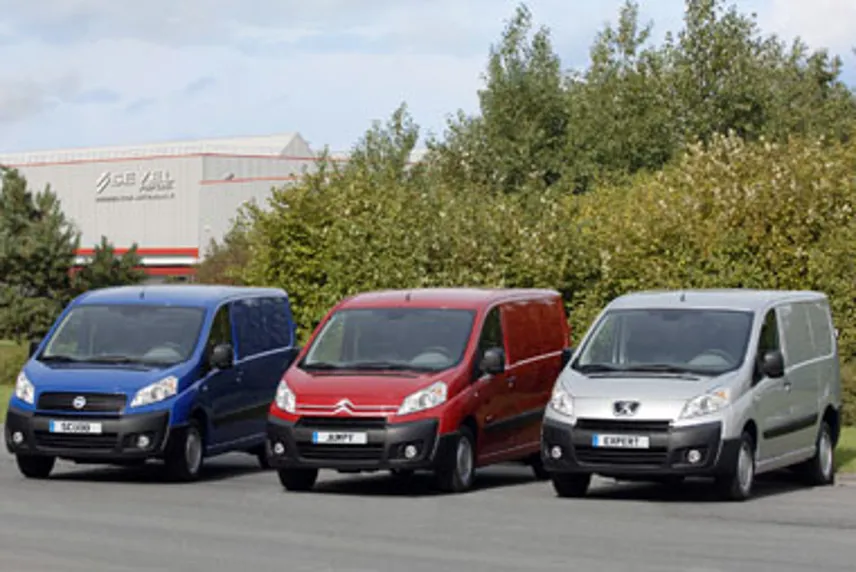Review
The compact van sector is already the fastest growing part of the LCV market but in March it reached boiling point with the launch of a stylish new set of triplets from Citroën, Peugeot and Fiat.
The new vans – Dispatch, Expert and Scudo respectively – roll off the Sevel Nord factory lines in Valenciennes in northern France and are the result of a co-operation between the three firms that dates back to 1978.
The old models were launched in 1995 and were based on the former Citroën Synergie/Peugeot 806/Fiat Ulysse MPV platforms, thereby offering true car-like driving capabilities way ahead of the opposition.
But they have been gradually losing their cutting edge as models like the Vauxhall Vivaro, Volkswagen Transporter and Mercedes-Benz Vito were launched against them.
There was also a problem of a weight and load volume gap in the range between these smaller vehicles and their bigger brothers the Citroën Relay, Peugeot Boxer and Fiat Ducato.
Both of these problems have been addressed with these stylish and capable new offerings.
Not only is the driving experience improved, but now long wheelbase and high roof versions are on sale for the first time, along with Combi versions which have up to nine seats.
The new van is the result of a 440m euro investment at the plant, which has to date built 1.6 million vehicles and employs 4,400 people.
It also comes hot on the heels of the launch of brand new versions of the larger Relay, Boxer and Ducato – which are also the same van and come from the Sevel South plant in Italy – giving the three manufacturers a convincing new story to tell fleet buyers.
The new vehicle aims to satisfy the ever-growing needs of van fleet buyers by offering bigger load compartments and heavier payloads.
There are also standardised connections in the electrical unit which will make it easier for conversion firms to add equipment such as warning lights for ambulances and compressors for refrigerated vans.
Payloads range from 913kg to 1,350kg and load volumes go from 5.0 cubic metres to 7.0 cubic metres, while lengths are either 4.8 metres or 5.13 metres.
Under the bonnet, there is a choice of diesel engines, with a 1.6-litre unit offering 90bhp mated to a five-speed gearbox or a 2.0-litre unit with 120bhp or 136bhp, mated to a six-speed box.
The cab has been completely reworked and modernised, with a stylish dashboard designed by Pininfarina.
In the back, meanwhile, twin side sliding doors come as standard.
Behind the wheel
It seems that after just about every van launch I have attended this year, I’ve come back raving about the vehicle’s stunning looks and amazing drivability.
The designers and engineers have finally twigged that there is no reason why a van should be any worse looking or have worse driving dynamics than a car.
They have taken the bull by the horns and have triumphed.
And no more so than the teams at Citroën, Peugeot and Fiat who have managed to produce a van that not only looks stunning but drives like a dream too.
Let’s take the outside first.
An elegant, elongated nose curves gracefully back via slash-cut headlamps into a stylish load area that incorporates lots of plastic padding to keep the van free of knocks and scrapes.
Even in long wheelbase high roof format, the van still looks smart – unlike its rivals the Vauxhall Vivaro/Renault Trafic/Nissan Primastar – which look positively hideous with a high roof. Climbing aboard, the cab looks a lot bigger and business-like than the old model.
The MPV on which this van is based has a space-age dash which sweeps across the vehicle in a single span, with all the instruments in a cluster in the centre.
The van’s designers have eschewed such frippery and have gone instead for a chunky affair that houses the instruments in a more conventional way, while managing to look rather chic too.
That’s Pininfarina’s influence for you.
















